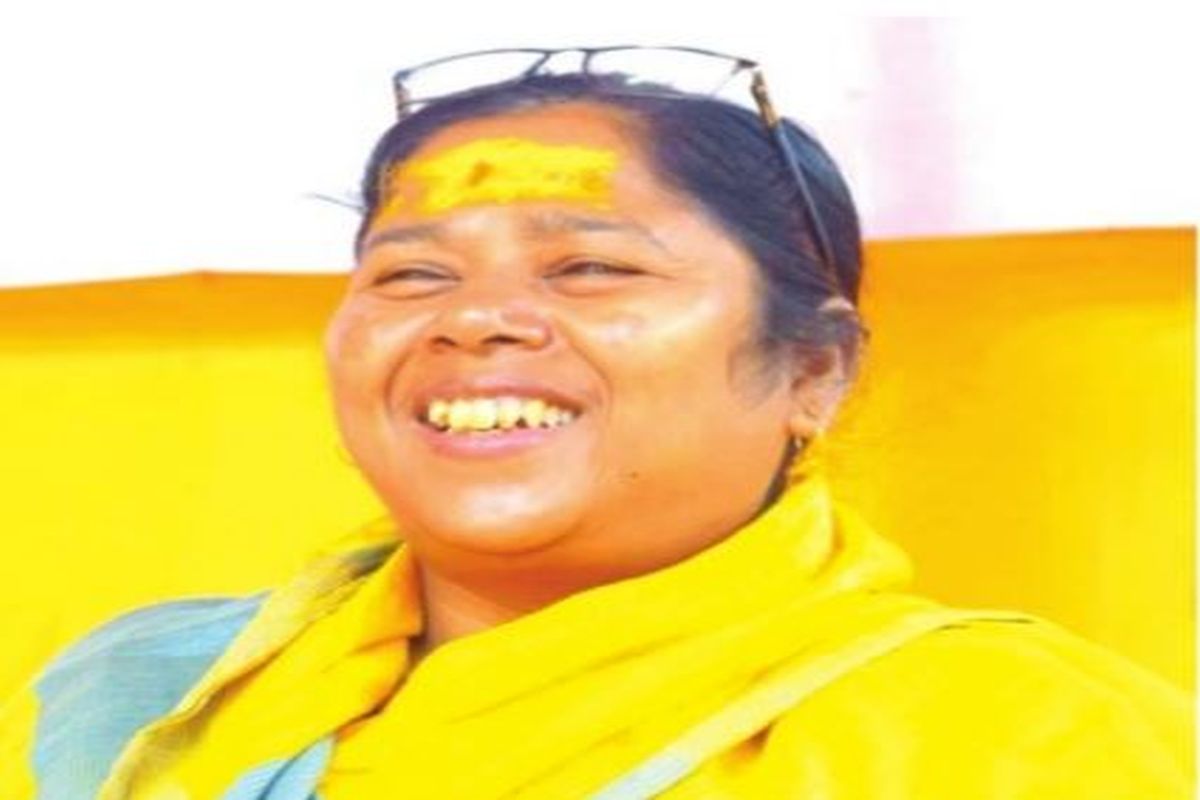BJP terms AAP’s allegation on water shortage as ‘lie’
Sachdeva claimed that despite the peak summer heat, there is no widespread discussion about a major water crisis in Delhi.
Tripura that normally has women in electoral politics had only three candidates this time.
Ninglun Hanghal | Imphal | May 27, 2019 3:14 pm

Newly elected BJP MP Pratima Bhowmik from West Tripura LS constituency. (Photo: SNS)
The huge mandate for the Bharatiya Janata Party-led National Democratic Alliance government has resonated in the North-east as well, especially among women candidates in the region.
Across the country, the number of women MPs has increased from 62 in 2014 to 78 this year, which is about 14 per cent of the total number of elected MPs to the Lok Sabha.
Advertisement
Taking a closer look at the Northeast, Tripura elected one woman to the 17th Lok Sabha — BJP’s Pratima Bhowmik from Tripura East. Maharaj Kumari Pragya Debburman of the Indian National Congress finished second in the Tripura West constituency.
Advertisement
In Meghalaya, Agatha Sangma of the National People’s Party won from the Tura constituency. This will be her second time in Parliament and she had also won the state Assembly election from south Tura in 2018. Out of the two seats in Meghalaya, one MP will be a woman.
On the other hand, Arunachal Pradesh and Mizoram saw one woman each in the fray. Jarjum Ete contested from Arunachal West on a Janata Dal (S) party ticket while an independent Lalthlamuani fought from the lone Mizoram seat.
Assam, which has the largest number of parliamentary seats in the North-east at 14, elected only one woman this time — Queen Oja of the BJP from Guwahati constituency. She is the only woman to win out of eight candidates in Assam.
Meanwhile, Manipur, with two parliamentary seats, and Nagaland and Sikkim, both with one, did not have any women candidate in this General Election. Comparatively, in 2014, there were 26 women candidates across the eight North-east states.
In Assam, out of a total of 16 women candidates, only two won the election — Bijaya Chakraborty and Sushmita Dev of the BJP and INC respectively.
On the other hand in Tripura, there were seven women contesting the previous General Election but none of them won. Same goes for Manipur where the two women candidates could not win. In Meghalaya, one woman contested in 2014 but lost while there were no women candidates in Arunachal Pradesh, Mizoram and Nagaland last time.
Even as the BJP-led NDA government has come back with a thumping majority, the scenario for elected women representatives in the Northeast paints a sorry picture. The 2019 General Election saw an even lesser number of women candidates in the region.
In Assam where more women usually contest, there was a decrease in the number of candidates let alone them being elected. Tripura that normally has women in electoral politics had only three candidates this time.
The trend of women representation in the North-east has seen declining numbers in recent years. Winning is another thing altogether but the dwindling number of women coming out to contest is itself an indication of the grave situation of women in the region.
This is true not only of the Lok Sabha polls but more worryingly, in state Assemblies too. In Tripura, there are now only three women MLAs, compared to five in the previous Assembly.
In Meghalaya, 31 women contested in the last Assembly election and only three won, which again was two less than the previous government. Meanwhile, none of the five women candidates in the last Nagaland Assembly election could win.
In the 2016 Assam state election, out of the 1,064 candidates, 87 were women and of them, only eight won — a decrease from 14 in 2011.
In Manipur too, the three women MLAs in the previous Assembly came down to two in 2017. Mizoram is one state that has never seen any candidate nor elected women MLAs to its Assembly. An encouraging trend is in Arunachal Pradesh, where 11 women are contesting the Assembly polls. This is an increase from seven in the 2014 elections, where only one emerged victorious.
This is the state, which is set to welcome three women legislators to its Assembly this time. After its spectacular show, a relook is warranted at the BJP’s election manifesto. The party had promised to reserve 33 per cent of seats in the Parliament and State Assemblies for women if it returned to power.
The manifesto said, “Women’s welfare and development will be accorded a high priority at all levels within the government, and the BJP is committed to 33 per cent reservation in parliament and state assemblies through a constitutional amendment.”
It must be mentioned here that the Women’s Reservation Bill or the Constitution (108th Amendment) Bill 2008, lies pending in Parliament. The 33 per cent reservation for women in the Parliament and state Assemblies was introduced through a Constitution Amendment Bill. While it was vocally supported by political parties, the process of amending the Constitution never really took off.
Now that the BJP is back at the helm, it must fulfil this promise from its manifesto. The party must not forget that women constitute half the electorate in India and it’s more than half in most North-east states. It is time they take women voters and women representation seriously.
(The writer is a freelance journalist based in Imphal and Dimapur)
Advertisement
Sachdeva claimed that despite the peak summer heat, there is no widespread discussion about a major water crisis in Delhi.
Politics in Uttar Pradesh has turned into a digital battleground, with leaders from the ruling BJP and the opposition Samajwadi Party trading barbs on social media.
BJP MP Captain Brijesh Chowta (Retd), who is among the members of the all-party delegation led by DMK MP Kanimozhi to Russia, said that the first day of the visit was "fruitful."
Advertisement
